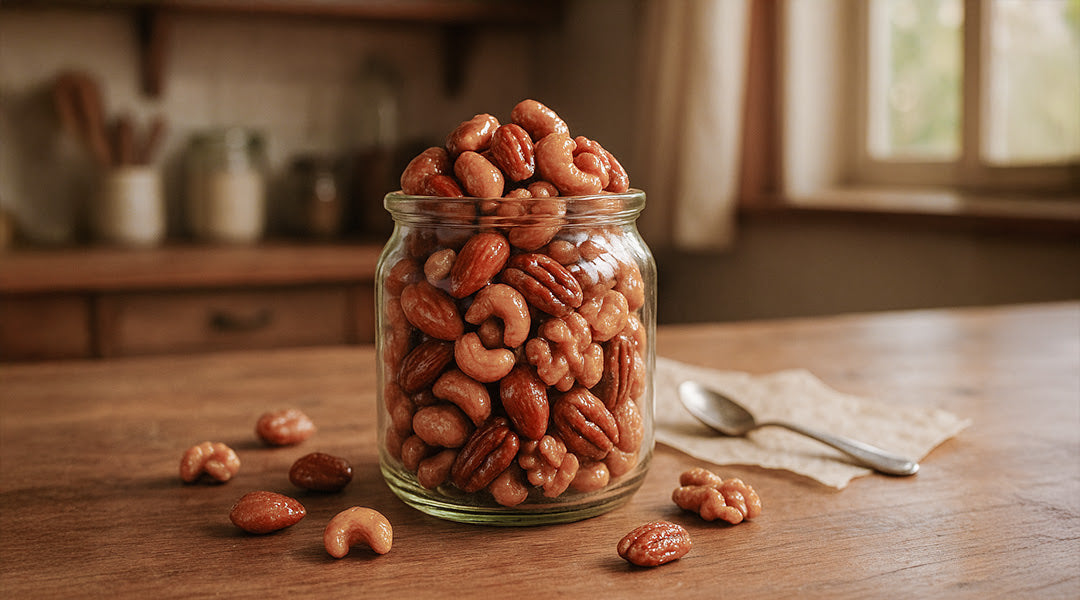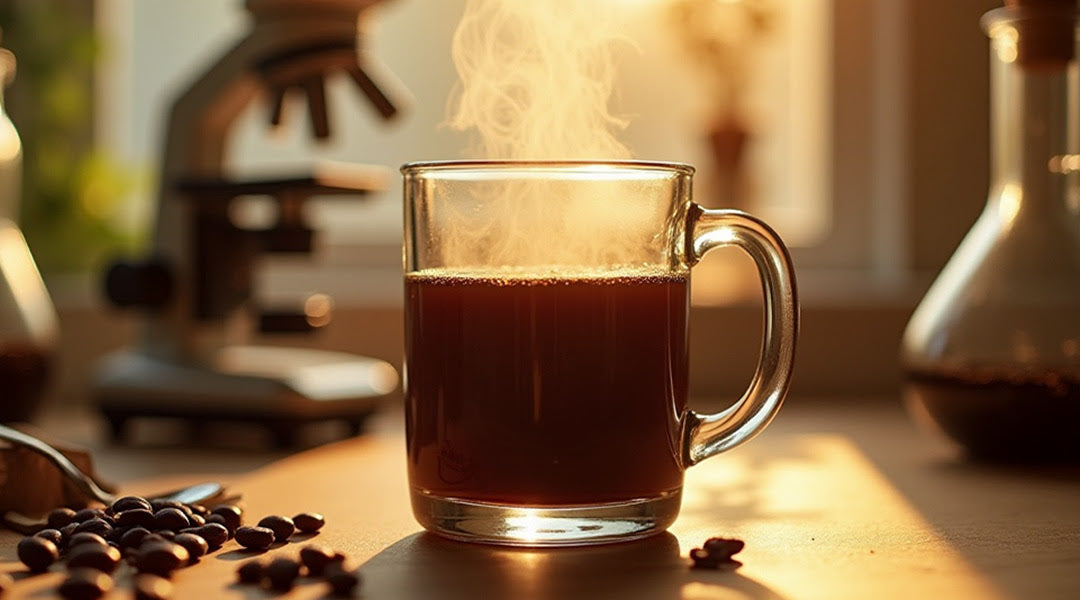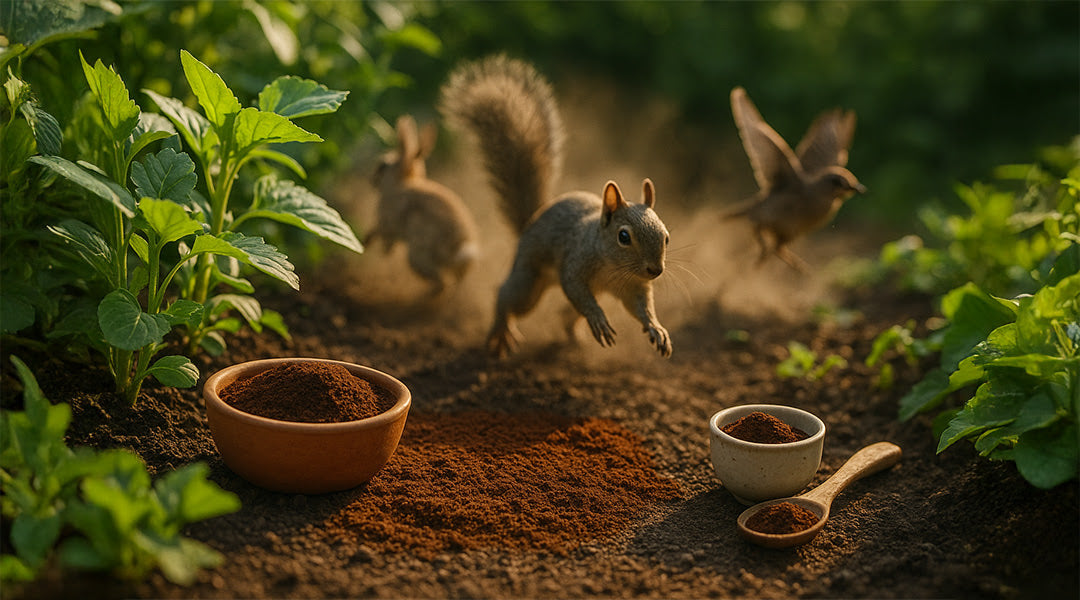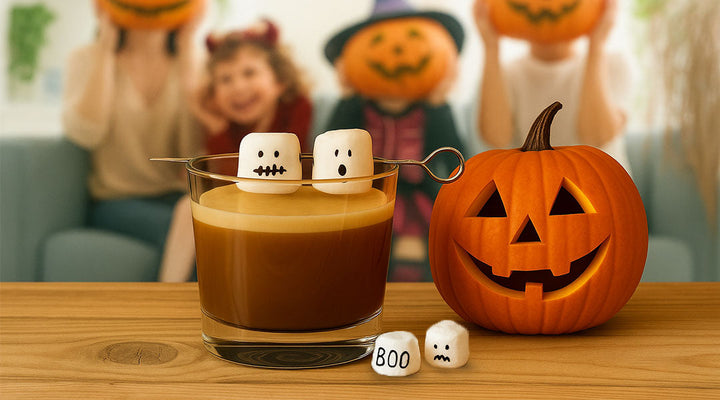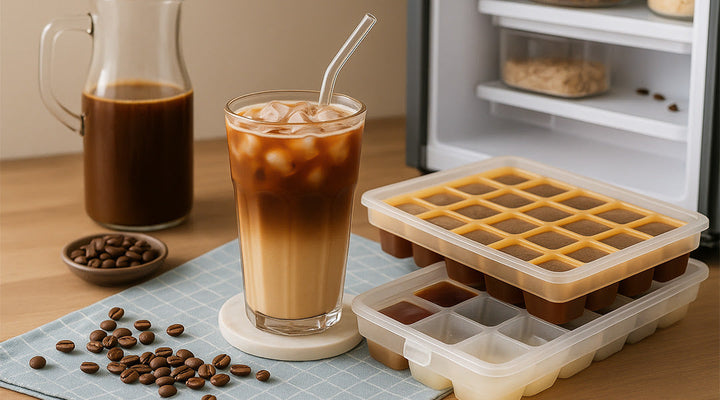
Biscotti - Trendy Cookie, Or Coffee’s Perfect Companion?
A little touch of sweetness, a hint of nuttiness, and a rich, satisfyingly crunchy texture…ah, sounds like a treat just begging to be dipped in or enjoyed alongside a rich espresso or creamy cappuccino!
What treat are we referring to? Biscotti, of course!
Many people love the crispy texture and bite of this coffee companion, but this trendy treat often comes with a few questions:
- What is biscotti?
- Is it really a cookie?
- Where did biscotti come from?
- Why doesn’t it look or taste like a traditional, American cookie?
- Is biscotti the best cookie to enjoy with a cup of coffee?
- And, what makes this dessert pair so well with coffee?
Today, we’re seeking to answer each of these questions and more.
So, grab your mug, fill it with your favorite Lifeboost brew, and let’s discover what your mug is missing…unless you already have some biscotti, that is!
What Is Biscotti?

Simply stated, biscotti is a type of cookie.
They may not be shaped like a traditional cookie, and they may not have the typical texture or consistency of a traditional cookie, but biscotti are indeed cookies.
The word biscotti means twice cooked, and this references the fact that these cookies are baked two times, a practice which gives the cookie its distinctly hard and dry texture.
The origin of biscotti can be traced back to Rome, where bakers primarily made the cookies out of flour and water, with options like nuts or honey rarely added.
Roman soldiers were some of the first fans of this type of cookie as they were easy to store, transport, and enjoy while away from home due to their dry, crunchy nature and long shelf life.
At one time, some even thought biscotti was so shelf-stable that it would be edible for centuries!
Of course, we know this isn’t true, but the fact that these cookies make such great storage and travel companions can make such thoughts seem plausible.
But, back to biscotti origins… As the Roman Empire spread and soldiers were commonly on the move, the cookie’s popularity also began to spread throughout Europe with such movements.
How, you ask?
Well, when local bakers learned of this treat, each developed their own variations to serve to their customers, so it didn’t take long for its popularity to ignite.
Unfortunately, this popularity didn’t last long, for biscotti was nearly snuffed out during the Dark Ages as culinary developments stagnated during these years.
Thankfully, a few talented Italian bakers brought the cookie back during the Renaissance period, bringing with its resurgence a variety of inventive flavors.
Such upgrades introduced dried fruits, nuts (including the classic almond flavors commonly used in many biscotti cookies today), chocolate pieces, and more, which sent the popularity of this once bland offering soaring throughout Italy and other parts of Europe.
It is also this version of the cookie that most enjoy today, with the former, less tasty, cookies of Roman origin having mostly faded out during the Dark Ages.
It is commonly believed that America was first introduced to biscotti as far back as the late 1400s or early 1500s, many noting that Christopher Columbus was said to have brought the easy-to-store cookies along with him on his voyage.
But, when and where did coffee become such a faithful companion to this cookie?
I’ve commonly heard that biscotti’s Italian origins made it an instant coffee accompaniment, with the rich heritage of espresso linked to Italian culture, but is that really true?
The Biscotti-Coffee Connection

The idea that coffee was biscotti’s original companion is actually a myth.
In fact, many Italians still enjoy biscotti, not necessarily with espresso or other coffees, but with a sweet wine known as Vin Santo. (Italians also enjoy it with espresso, etc. today, but more on that in a moment.)
Vin Santo, or Vino Santo, is a sweet, dessert wine made near Tuscany. It typically boasts flavors of apricot, caramel, and hazelnut. And, biscotti has been the pairing of choice for this wine for centuries.
It wasn’t until the 20th century that biscotti became popular in the United States, and during this time the cookie began to be served as a common coffee and tea side dish.
Despite its popularity today, it actually took some time for this type of cookie to take root in the states, as Americans were used to cookies that were sweeter, softer, and far more varied when it came to flavor options such as chocolate chip, peanut butter, oatmeal, etc.
But, as other flavors and ingredients began to be incorporated in biscotti, both in America and around the globe, many noticed a spectacular feature specific to this cookie - it lacked the crumbling, fall-apart nature of other cookie types, making it the perfect option for dipping in hot beverages such as coffee, tea, and hot chocolate.
Some biscotti connoisseurs have even described the cookie as potentially jaw-breaking, and dipping the cookie into such liquids serves to transform the dessert into a slightly softer, smooth, and more palatable bite.
It is estimated that during the 1980’s Italians began essentially reinventing biscotti yet again, incorporating new and exciting flavors. Then, by the 1990’s Americans, too, were hooked on this cookie as a coffee companion.
Since then, biscotti and coffee have been the trendy pair at cafes all across the globe.
Biscotti and coffee complement one another in a variety of ways:

- The dry, hard, crunchy texture of biscotti perfectly absorbs coffee’s classic bold flavors, allowing people to savor all the rich flavors of their brew as it collides with the intricacies of the cookie in each bite.
- While biscotti isn’t overly sweet, it’s just sweet enough to balance out the natural bitterness of coffee.
- Many Italians enjoy biscotti with espresso - espresso that is served without added milks, creams, or sugars - and for those in other parts of the world that enjoy this offering as well, the flavors in the biscotti provide just the right amount of sweetness and texture to take the enjoyment of espresso to new levels.
- If you do like to add a little bit of milk to your espresso (or other coffees), the added creamy texture here, combined with the bold coffee flavors, serves to balance out the dryness of the biscotti.
- If you prefer a more subtle brew, a classic medium roast coffee pairs well with biscotti too, except here the flavors in the biscotti are more noticeable and pronounced against the smooth and balanced flavors in the coffee.
- If your biscotti contains any hints of citrus, such as lemon or orange, pairing with a light roast coffee can help to bring out these notes.
- Chocolate biscotti is commonly enjoyed with deep, dark roasts of coffee as a full-bodied brew tends to bring out the rich chocolatey flavors in the cookie.
- Even chai teas and hot cocoas are enjoyed with this dippable cookie selection as their heat softens the biscotti while their respective flavors both balance and bring out the baked-in tastes in the cookie.
Then, of course, aside from coffee, you can always try the Italian original, pairing this delightful, crunchy cookie with a sweet wine.
A European Classic Turned Global Trend

Most American coffee lovers recognize biscotti as a common cup-of-joe-companion. And, with the cookie’s origins traced back to Italy, it’s not hard to imagine why it’s still highly popular in this part of the world.
But, where else is biscotti popular today?
As we mentioned, in America, biscotti is most commonly enjoyed in cafes, with coffee or tea.
Hmm, what about South America?
A lot of the world’s coffee comes from Central and South America; however, biscotti just isn’t as common here, with other cultural classics taking the coffee companion stage, such as the alfajor, a tender and delicate sandwich cookie.
In Asian cultures, while biscotti is not a typically served item, it is continually rising in popularity, and most often enjoyed with tea.
But, what about Europe?
Traveling to Europe takes us back to biscotti’s origins, but is this cookie still as popular as it once was there? And, where in Europe is biscotti most enjoyed?
As biscotti was first made in Rome, then reinvented after the Dark Ages in Tuscany, Italy is still known for this incredible cookie even today.
While many Europeans, across the continent, now enjoy biscotti at home and in cafes alongside their favorite coffee roasts and espresso inspired beverages, Italy tops this area, the world really, in its love for biscotti.
In fact, while you can certainly get biscotti at most any cafe across Europe (culture and popularity demands it, right?), a simple search will quickly inform any seeker that Europeans still insist the best biscotti, world-over, is found in Italy.
As Italy is recognized as biscotti’s country of origin, the cookie has become an honorary symbol of Italian tradition and culinary heritage.
And, today it is still considered one of the most popular snacks or cookies in all of Italy.
So then, when and how do Italians most commonly enjoy biscotti?
Many Italians still pair this dessert with Vin Santo, or a sweet wine, as an after dinner digestif, or digestive aid.
But, if they’re enjoying biscotti with breakfast, it is commonly served with milk.
And, sampling biscotti alongside an espresso, cappuccino, or other coffee beverage, in Italy, is commonly done at snack times.
Ah, but if you’re ever in Italy, there are a few things to take note of when ordering biscotti.
First, biscotti is the Italian word for all types of cookies and biscuits.
Cantucci, on the other hand, is the Italian word for the original almond biscotti that was first made near Tuscany.
While there are some distinctions here, Italians typically think of biscotti as what Americans refer to as cookies, and what Americans call biscotti, Italians refer to as cantucci.
At the end of the day, they’re simply known as delicious in every area of the globe where this crunchy, twice-baked, cookie is dippably enjoyed with a cup of coffee!
So, before we go, we’d like to know, what’s your favorite biscotti flavor?
Do you prefer your biscotti with almonds or other nuts? Do you like biscotti with citrus notes or dried fruits?
What about biscotti with chocolate chips, or those varieties with a bit of chocolate coating (dipped or drizzled on one side)?
Aside from the above variations, here’s a mouthwatering list that we’ll leave you with - let us know which you like and if we’ve left any of your favorites off the list!
As you’ll soon see, biscotti flavors have come a long way since their creation as bland, dry Roman soldier traveling staples!

Oh, and be sure to check out the recipe at the end. (Hint, hint…you can make your own biscotti at home!)
- Anise (a common and classic Italian biscotti flavor)
- Almond anise (another Italian classic)
- Almond apricot
- Orange cranberry
- Chocolate chip
- Chocolate almond
- Lemon white chocolate
- Cherry pistachio
- Lemon pistachio
- Chocolate walnut cherry
- Coconut macadamia
- Gingerbread biscotti
- Hazelnut chocolate
- Butter pecan
- Peppermint chocolate
- Pumpkin
It seems the possibilities are endless when it comes to this incredibly popular, Italian original that’s best suited for dipping and dunking…in wine, tea, hot chocolate, and coffee!
Make Your Own Biscotti At Home…
Sure, you could stop in your local cafe and grab some biscotti to bring home and enjoy with your favorite Lifeboost roast, or you could travel to Europe for some of the world’s best biscotti.
But, if you’d like to try your hand at making some from the comforts of your own kitchen, here’s a simple, delicious dark chocolate chip biscotti recipe you can whip up at home.
Ingredients
- 1 cup sugar
- 2 eggs, plus 1 egg white, divided (room temperature)
- 1 teaspoon almond extract
- 1 ½ cups all-purpose flour
- ¼ cup cocoa powder
- 1 ½ teaspoons baking powder
- ¼ teaspoon salt
- ¾ cup dark chocolate chips
Instructions
1. Preheat the oven to 375 degrees Fahrenheit. Then, line a large baking sheet with parchment paper.
2. In a large bowl, whisk 2 whole eggs together by hand until the mixture turns pale yellow (roughly 2 minutes).
3. Mix in almond extract until combined, then set aside.
4. In a separate bowl, sift flour, cocoa powder, baking powder, and salt together.
5. Add dry mixture and chocolate chips to the egg mixture and stir with a wooden spoon until everything is fully incorporated.
6. Lightly flour the prepared baking sheet, then transfer the dough to the sheet. (The dough will be sticky, and that’s a good thing.)
7. Sprinkle a little bit of flour on top of the dough, then form or shape it into an even rectangle about 4 inches wide and 14 inches long. (You can add more flour as needed while shaping the dough.)
8. Lightly beat the remaining egg white in a small bowl, then brush the surface of the dough with the egg white.
9. Sprinkle a bit of granulated sugar on top, if desired, then bake for about 30 minutes.
10. Remove from the oven and, using the parchment paper, slide the dough onto a cutting board. Using a serrated knife, cut the dough into 1-inch-thick slices.
11. Spread the slices out on a baking sheet, and bake again for 10 minutes, turning the cookies over halfway through the baking time.
12. Allow to cool completely, then enjoy with your favorite brew!
Check out Lifeboost Coffee Grata Medium Roast.
- https://www.thebiscotticompany.com/blog/biscotti-what-are-they-the-italian-cookie-with-a-story-to-tell/
- https://bonafurtuna.com/blogs/food-for-thought/your-biscotti-questions-answered#
- https://www.thebiscotticompany.com/blog/biscotti-cookies-exploring-the-addicting-flavors-health-history-of-this-traditional-italian-cookie/#
- https://food52.com/blog/14282-biscotti-are-italy-s-most-famous-cookies
- https://buckscountybiscotti.com/blogs/blog/5-coolest-facts-about-the-history-of-biscotti
- https://aldoscoffee.com/blogs/guides/what-is-biscotti-complete-guide#
- https://www.thebiscotticompany.com/blog/biscotti-cookie-the-rise-and-fall-and-rise-again/#
- https://www.thebiscotticompany.com/blog/biscotti-and-coffee-pairings-find-your-perfect-match-with-the-biscotti-company/
- https://www.hotelchocolat.com/uk/blog/coffee/5-best-biscuits-to-pair-with-coffee.html#
- https://www.casablancacooks.com/alfajores-dulce-de-leche-sandwich-cookies/#
- https://buttermilkpantry.wordpress.com/2020/12/13/how-to-make-thin-crisp-biscotti/#
- https://foodicles.com/angelos-biscottiera-biscotti-history/
- https://siciliangirl.com/2011/12/anise-biscotti/#
- https://larte.biz/biscotti-cantucci/#
- https://giadzy.com/blogs/tips/cantucci-vs-biscotti-whats-the-difference#
- https://dallafonte.com/from-our-family-kitchen-the-history-and-joy-of-biscotti/#
- https://www.tasteofhome.com/collection/biscotti-recipes/
- https://feelgoodfoodie.net/recipe/biscotti-cookies/#wprm-recipe-container-82684
- References for the article to confirm data and information.


